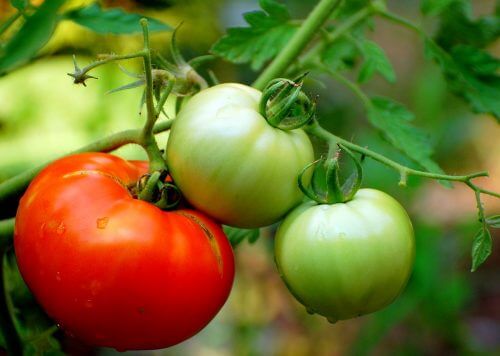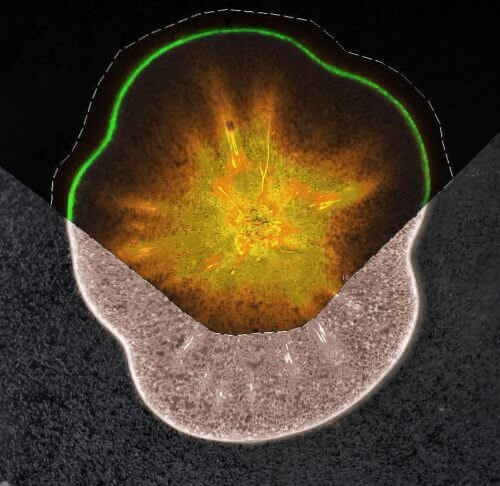Scientists from the Weizmann Institute created a database of active organic substances in plants, and developed a computer program that enables the identification of the substances by comparing experimental results with the database. They discovered that it is possible to extract active organic substances from common plants, which until now were only produced from rare plants.

Here is a good reason why you should not peel the skin of the tomato: precisely in the skin, as the scientists of the Weizmann Institute of Science discovered, there are antioxidants that until now were mainly associated with legumes and seeds. This finding is the result of a new study, with the help of which it became clear - thanks to the development of a new method - that active organic substances, which are identified with individual plants, are more common in the plant kingdom than people tend to think. The same is true for active organic substances used in the production of medicines and care products. These findings Recently reported in the scientific journal Nature Communications..
Each plant produces an average of 15,000 active organic substances, called metabolites. To deal with the great task of identifying main metabolites in any given plant, Dr. Nir Shaf and other group members, led by Prof. Assaf Aharoni From the Department of Plant and Environmental Sciences, a database of plant metabolites called WeizMass. Later, Dr. Shaf developed a computer program, MatchWeiz, which allows identifying metabolites by comparing experimental results with the database.
When the scientists used these computerized tools to examine the extraction from tomato flesh and skin, they were able to identify more than 20 metabolites in the tomato that had never been identified in this plant, including antioxidants in the skin that belong to the lignans group. When they compared three plants - the tomato, the duckweed, and Arabidopsis, which is a plant from the cruciferous family - it was discovered that there is an overlap between the metabolites that the plants contain, even though the plants themselves are completely different from each other. For example, the scientists found that the water lentil and Arabidopsis plants contain small amounts of organic substances that are popular in alternative medicine. These substances have so far only been produced from the medicinal plants Zingiber officinale, Ginkgo biloba and Orostachys japonicus. "The meaning of this is that it is possible to extract from common plants the substances that until now have only been produced from rare plants", says Prof. Aharoni. "Thus we will reduce the risk that unique metabolites will disappear from the world in the event that rare plant varieties become extinct."

"WeizMass and MatchWeiz", adds Prof. Aharoni, "may be very powerful tools in the study of the metabolism of plants and in the identification of metabolites with beneficial biological activity, for example - for the development of future drugs". The metabolites in plants are usually characterized using technology that identifies particles based on the ratio between their charge and mass (mass spectrometry). But using this method without additional aids is problematic, because there are metabolites whose mass is the same, but their structure is different, and therefore their properties are completely different from each other. For example, the metabolites characteristic of caraway or mint have the same chemical composition, but their different structure determines the difference between them. Therefore, to enable accurate identification of the metabolites, WeizMass and MatchWeiz include not only the mass data, but also other measurable features, such as the chemical formula and structural characterizations of the metabolites. Such a characterization could be, for example, the way in which each metabolite breaks down into components under experimental conditions, or the way in which it absorbs ultraviolet radiation. "In the beginning," says Dr. Shaaf, "we built WeizMass with information we received from various sources on about 3,500 metabolites, and now we are expanding the database to more than 6,000 metabolites. With the help of WeizMass, we are developing a calculation tool that will make it possible to determine the type of plant based on the composition of its metabolites."
The scientists explain that WeizMass and MatchWeiz can be used not only to study the substances in plants, but also to study living systems and other biological processes, such as the metabolism of animals, including humans.
Faculty scientists Dr. Ilana Rogachev and Dr. Sergey Malitsky participated in the study; Laboratory technician Dr. Sagit Meir; postdoctoral researchers Dr. Eva Heining and Dr. Shuning Zeng; research students Maor Bett and Hilary Weiner; and Dr. Ron Varnes from Wageningen University in the Netherlands.
#Science numbers
According to estimates, all the plants in the whole world produce more than 1,000,000 active organic substances.

2 תגובות
Strange, I didn't even think there was anyone who peels the skin of a tomato, it is so thin and edible, what for?
interesting and important,
Only that it is written: "……..in the event that plant varieties become extinct ……."
It's a shame that the authors are not careful about accuracy in the sorting concepts,